You can’t have a quality website without quality website copy. Quality copy plays a pivotal role in a sale. It serves to engage the consumer with a story, valuable information, or social proof.
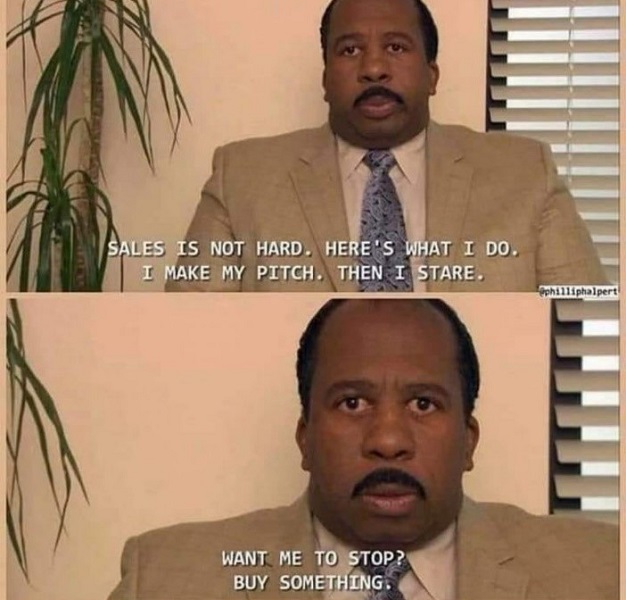
Unfortunately, this approach doesn’t work for everyone! You can’t stare over your website ?
When written effectively, quality website copy has the potential to round out an entire marketing strategy. However, if its quality falls short or the content fails to get the message across, it can be a deterrent. Today, we’ll help you avoid any website copywriting woes by covering the following:
- What is website copywriting?
- Why is website copywriting important for your business?
- 7 need-to-know website copywriting tips.
Let’s get into it!
What is website copywriting?
Website copywriting is the process of creating digital content for all portions of your website. This could include writing blog posts, landing pages, product listings, button CTAs, contact pages, and just about all types of marketing collateral.
Essentially, any text on your site counts as part of your business’s website copywriting strategy.
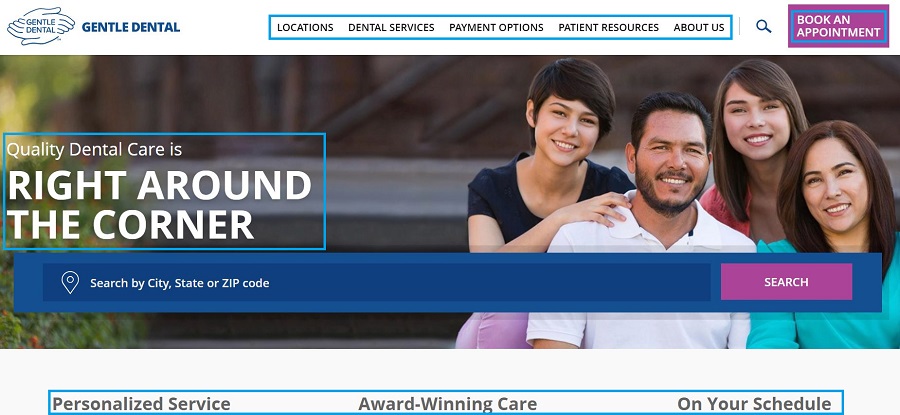
An example of all the places website copywriting could appear on a small business’s website.
Why is website copywriting important for your business?
Readers spend an average of only 37 seconds on a page. Your website copywriting acts as a first impression and can make or break a user’s visit.
Whether the aim is to persuade readers to purchase a product, download content, sign up for emails or complete any other specific action, your website copy pushes your visitors through the buyers’ journey. When you have compelling and convincing copy, you’re able to move more interested folks through the sales funnel which results in better marketing ROI for your business.
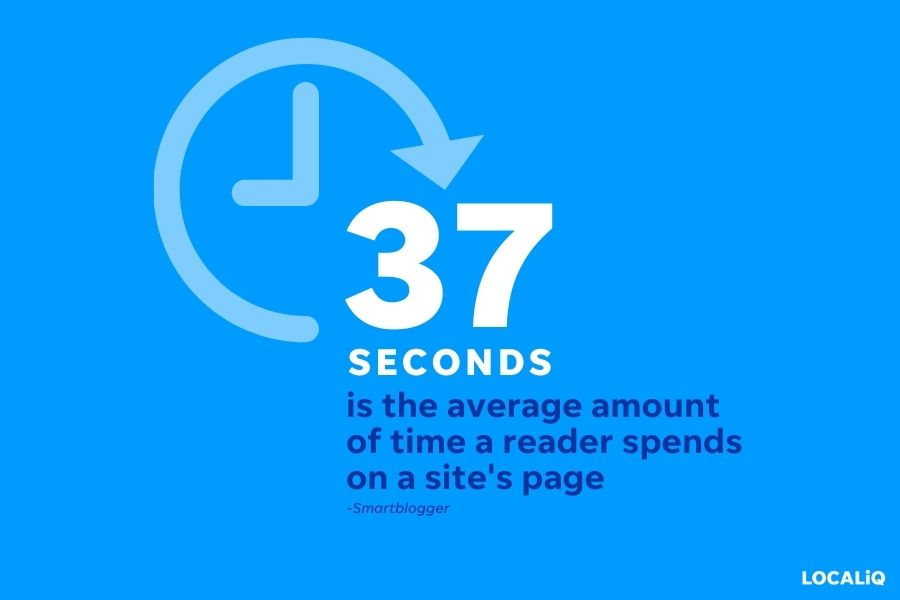
7 website copywriting tips to drive sales
Clearly, website copywriting is an essential part of your business’s marketing plan. Here are a few ways to ensure your site’s copy stays up to par:
1. Know your target audience
You’re going to have a hard time reaching your audience if you’re not sure who they are. Understanding who you are writing for and what they want from you is essential before beginning to actually write. One reliable method is to create a buyer persona for your potential customers.
A buyer persona is a representation of the ideal customer based on market data and accurate information about existing shoppers. Its purpose is to help you distinguish qualified prospects and tailor your content to meet customers’ specific needs.
Creating a buyer persona means you might consider your audiences’ specific behaviors, concerns, demographics, and more.
The result is being able to attract high-value visitors, leads, or buyers who are more prone to stay on the site and complete an action. Additionally, a deeper understanding of your target audience can improve other areas of your business such as product development, sales follow-up, and other matters relating to customer retention.
Recognizing the key motivating factors for specific audiences will help your website copywriting be more powerful.

2. Put serious thought into headings throughout your site
When a visitor gets to your site, your headings and titles are the first pieces of copy they’ll see. You want these to convey a message while also sparking intrigue—which can be a challenge for small businesses.
You’ll want all your headings (not just those at the top or on the first page) to be consistent with your brand while giving clear and meaningful direction to visitors. Subheadings should also be treated as headlines—not necessarily in length, but in relaying relevancy and inciting interest.
Here are some standard headline and subheading best practices you can follow for your website copywriting:
- Ask the reader a question
- Offer a description of a problem or solution
- Share a personal or corporate story
- Highlight numbers or a relevant fact
- Put keywords first
Longer headlines often work better. Research has found that 10-to-13-word headlines attract as much as two times the site traffic as those less than seven words. Another study found that 11-word headlines received the most shares across Twitter and Facebook.
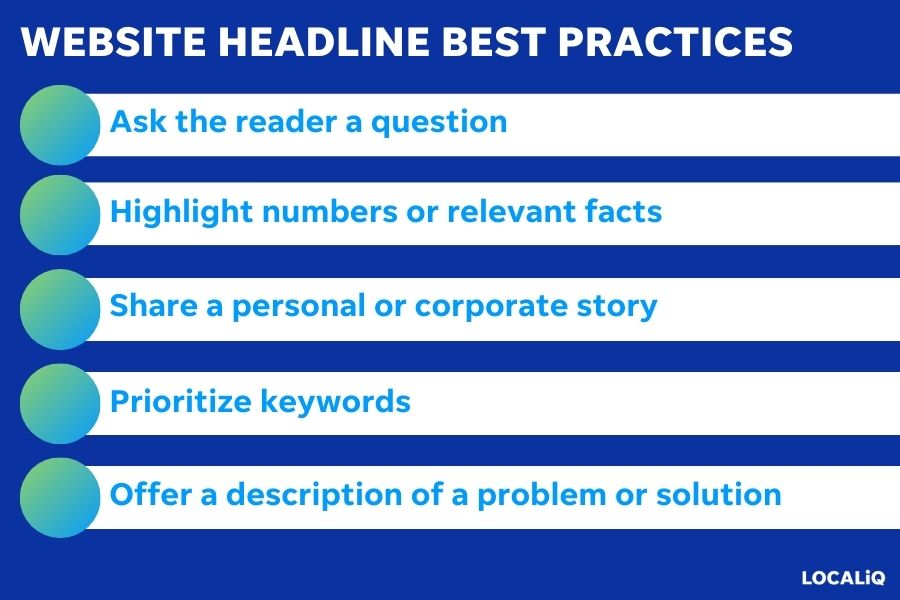
3. Focus your website copywriting on what you have to offer
The purpose of website copy is to persuade users to take an action and guide them through your site. To help customize the copy to this singular purpose, one best practice is to emphasize a single focal point or one value it offers the user.
Start by selecting what you believe is the most compelling and marketable aspect of your product or service. Detail its appeal to the readers and the value it can bring to their lives. While elaborating on multiple points may be tempting, a wordy or unfocused narrative might lose readers’ interest.
Similarly, prioritizing the product’s benefits, not its features, is the best approach. Website copy is meant to be a short and sweet hook to gain readers’ interest. Once they’re hooked and proceed through your website, you can highlight additional features or points. Good website copywriting makes potential customers want to learn more by highlighting what the item will do for them, instead of how it works.
Related: Make sure to employ direct response copywriting when creating your website content so you can drive meaningful actions.
4. Consider the power of words
More than 20 years of eye-tracking research has confirmed that the majority of visitors simply skim a webpage for relevant info. Their eyes skip around searching for keywords or phrases to quickly find the answers they need.
How can a writer get visitors to linger and read carefully?
Write words that sell. While words may have the same meaning, their connotations can resonate differently without the reader realizing this is happening.
Selecting the right words takes patience and practice. The key is to keep the goal of the message in mind: Captivate the reader for as long as possible.
For sales and website copy, compelling language has the power to instantly increase or decrease conversion rates. To confirm that influential or actionable words are selling the message, go back after the draft is complete and identify areas of weakness. Then inject vigor with industry-established trigger words into that copy.
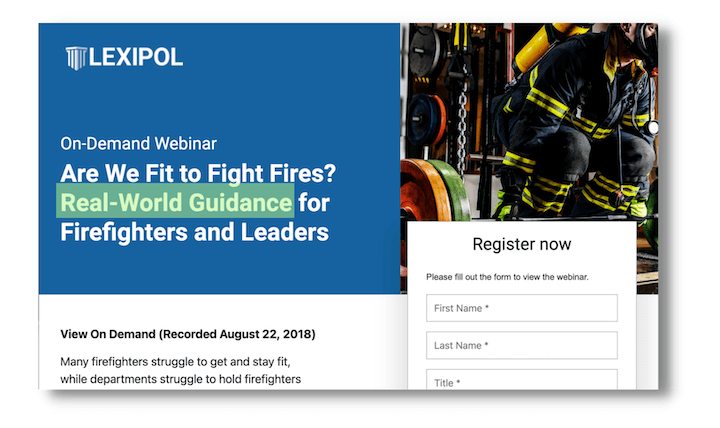
An example of a small business website that uses strong language in its copywriting.
5. Make your website copywriting conversational and authentic
Keep it casual. Don’t overdo it by adding convoluted words or descriptions. Writing as if you were having an in-person conversation with the target customer is best. Being personable, straightforward, and authentic can help users retain attention by sending a message that is easy to understand.
Good website copywriting is not just about word choice. The page’s format also influences the copy’s tone and overall impression on the reader. Remember to leave adequate whitespace on the page, break sections of copy with bullet points or subheadings, and use short paragraphs and sentences
Another important point on appearing authentic is to be honest. Don’t attempt to speak or act like someone you think the audience wants to hear from. In the end, readers are more likely to respond to a person speaking to them in a genuine, everyday manner.
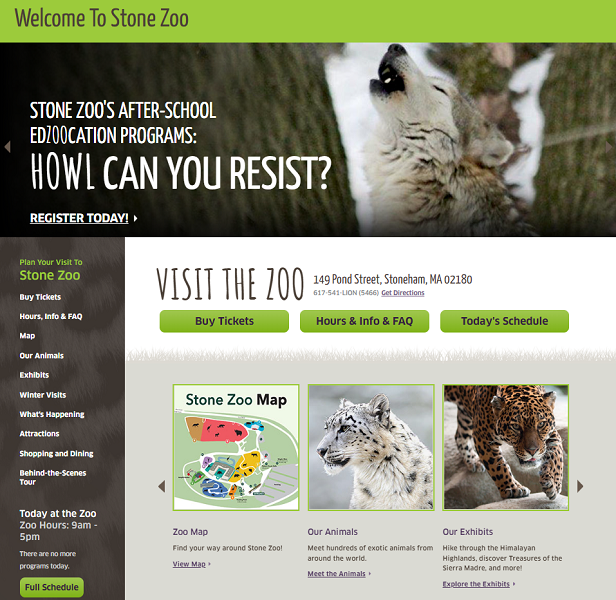
An example of a small business website that uses a conversational tone.
6. Be concise
As consumers, we are constantly bombarded with content. That’s probably why the typical reader consumes only 20% of the words on a page. To successfully impart a message, your website copy needs to be straight to the point.
Although filling the page with numerous attempts to sway the reader can be tempting, short is what works. In fact, landing pages with under 200 words have been proven to have the highest average conversion rate. To be effective, write in an approachable style and keep it simple—avoid showy words or long, run-on sentences.
For example, bullet points are meant to offer a glimpse into the product’s or service’s value without going into detail. Well-structured bullet points arouse curiosity, spark vivid imagery and help move the reader to action with concise, easy-to-digest snippets.
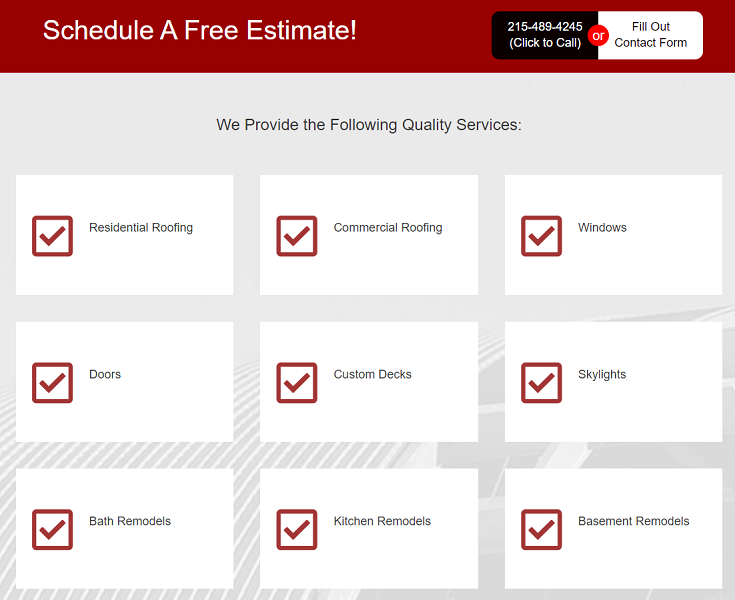
An example of short and sweet bullet points on a website.
7. End your website copywriting with a compelling call to action
The end goal of good website copywriting is to drive readers to perform an action. Whether to make a purchase, create an account, or contact your business, you want to compel them to move forward. This all comes together with the call to action, or CTA.
Personalized CTAs are powerful and can increase conversion rates by 202% when executed properly. To do so, your CTA must be straightforward and give readers an understanding of what will happen if they click or otherwise follow through. Think of the CTA as the start of a path potential customers can follow to further explore the product, service, business, etc.
Examples of effective calls to action include:
- Click here to learn more about (product).
- Check out our (downloadable content) today.
- Give us a call to schedule a free consultation.

An example of a higher education website that includes plenty of strong call-to-action phrases.
Improve your website copywriting one step at a time
As mentioned previously, finding the balance between writing something informative and engaging is an art. Putting yourself in the readers’ shoes makes writing a piece they can relate to and be engaged in easier.
If you need help knowing where to start when it comes to optimizing your website, try the LOCALiQ website grader for a free report on your site’s current digital presence.
Author Bio
Aaron Wittersheim is Chief Operating Officer at Straight North, an internet marketing agency. He has helped startups, middle-market firms, and Fortune 500 companies improve organizational structure and grow through his expertise in process conception, task automation, and internal project management. He is passionate about helping companies reach their full potential.






